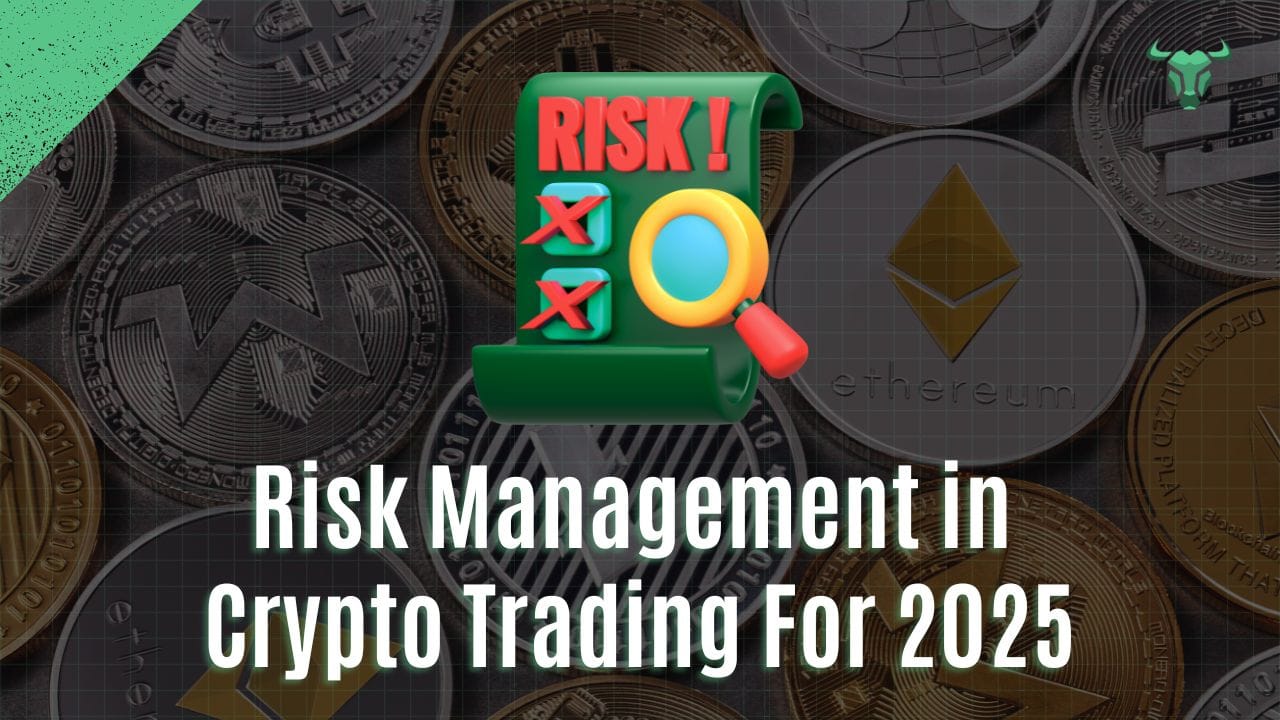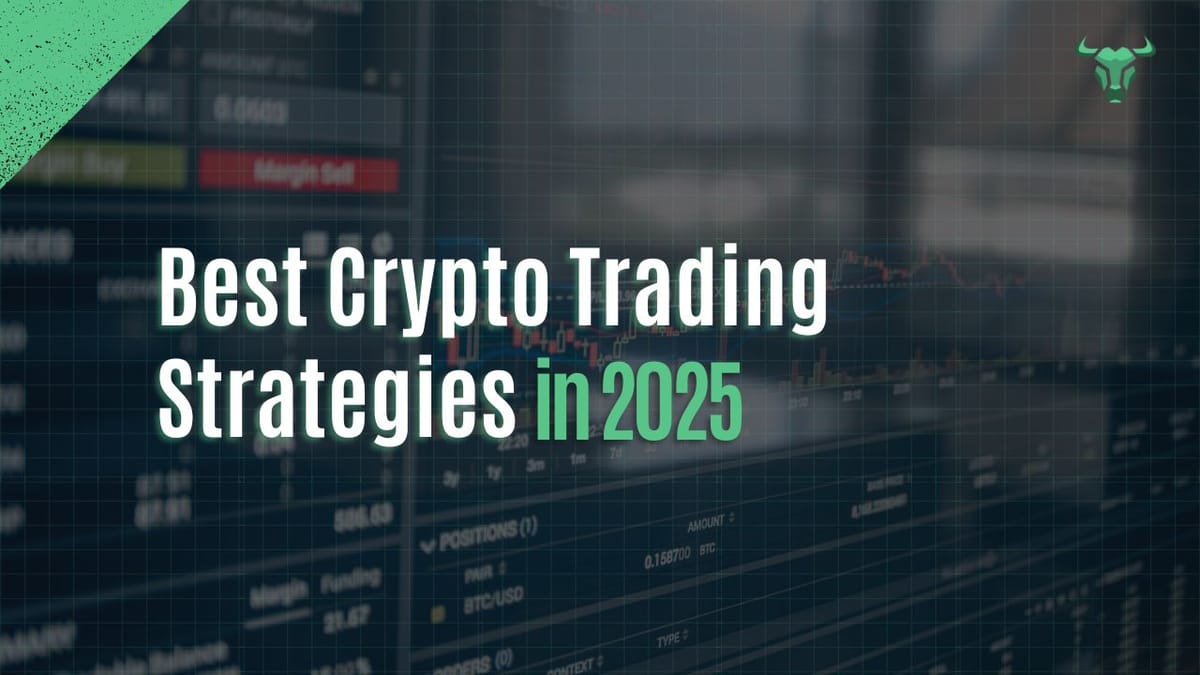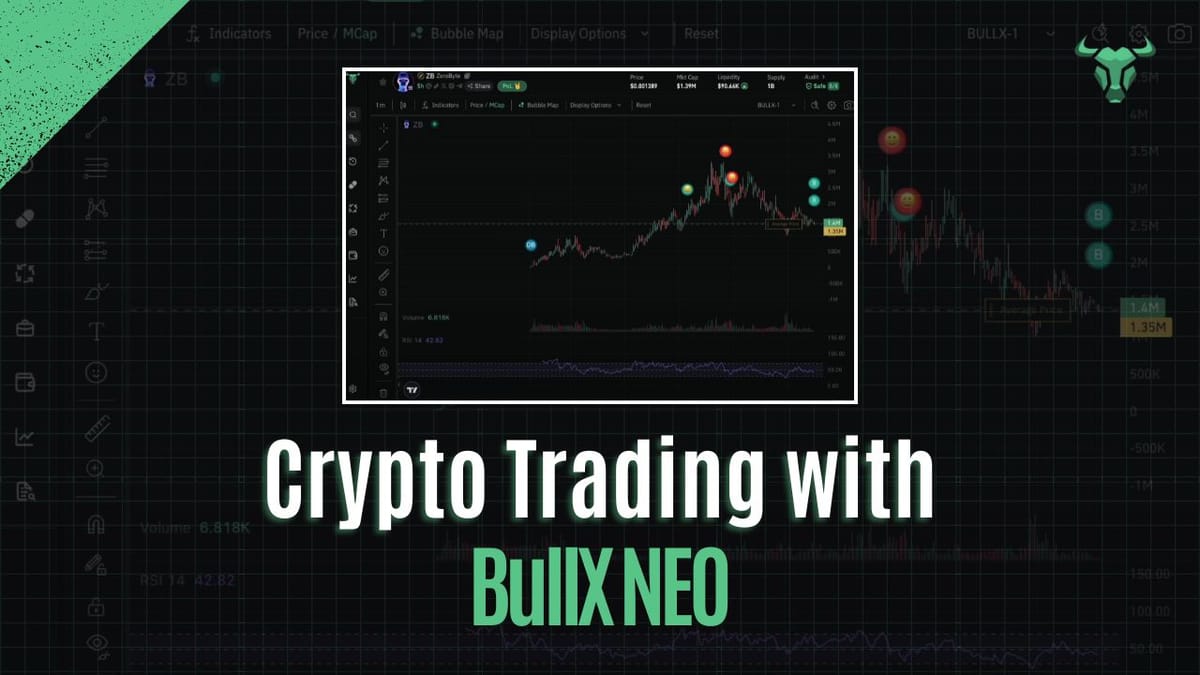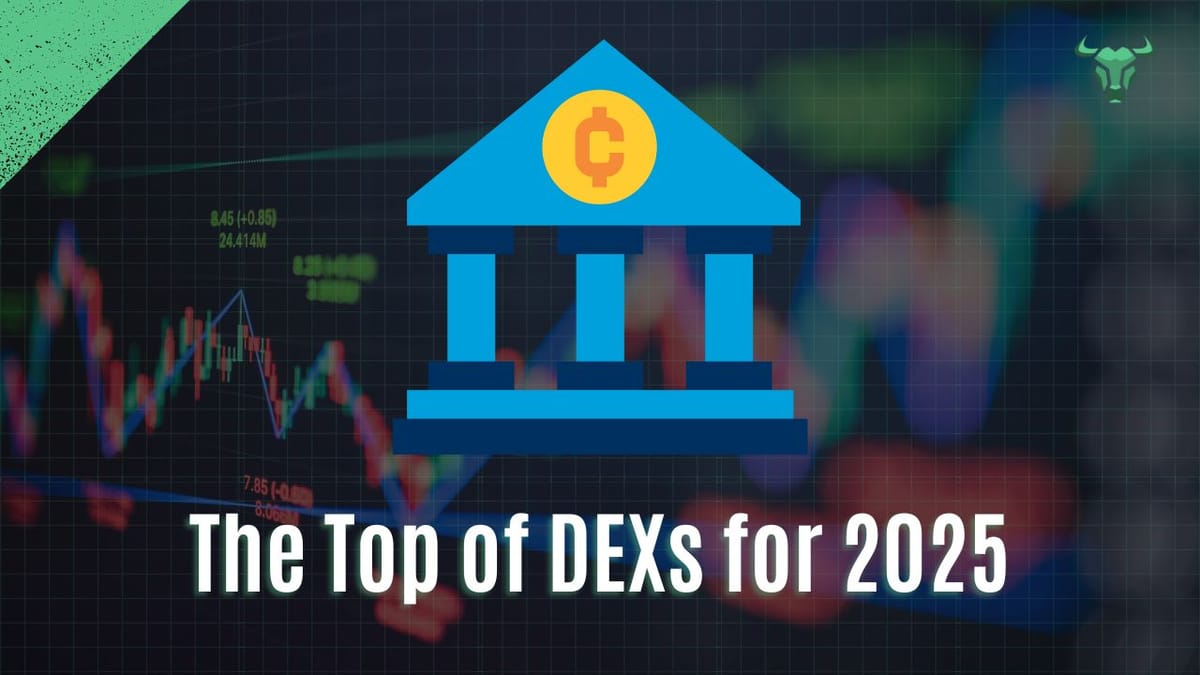Risk Management in Crypto Trading For 2025

Crypto trading can be exciting, but it's also pretty wild. Prices jump all over the place, and there's no big bank to save you if things go wrong. That's why figuring out how to handle risk is super important. If you want to stick around in the crypto world and actually make some money, you need a plan. This article will walk you through how to protect your crypto investments, especially as we head into 2025. We'll cover everything from crazy market swings to keeping your digital money safe. It's all about smart choices and not getting caught off guard.
Key Takeaways
- Crypto markets move fast, so understanding how volatile they are is step one for any trader.
- You need a solid plan to deal with different kinds of risks, like prices dropping or platforms having issues.
- Don't let your feelings get in the way of smart trading decisions; stick to your strategy.
- Always do your homework before putting money into any crypto, and keep track of your trades.
- Using new tech, like AI, can help you manage risks better, but always double-check what the tech tells you.
Why Risk Management is Essential in Crypto Trading

Crypto trading is exciting, but it's also risky. You're basically your own bank, and there's no safety net if things go south. That's why crypto risk management is so important. It's not just about avoiding losses; it's about staying in the game long enough to actually learn and profit.
Understanding Market Volatility
Crypto prices can swing wildly, like a rollercoaster on steroids. One minute you're up, the next you're down. This volatility can be scary, but with the right risk management, you can handle it. Think of it like this: you wouldn't drive a car without brakes, right? Risk management is your brakes in the crypto world.
Navigating 24/7 Trading Cycles
Unlike traditional markets, crypto never sleeps. It's trading 24/7, which means there are always opportunities, but also always risks. This constant activity can be overwhelming, and it's easy to make mistakes when you're tired or stressed. Risk management helps you stay disciplined and avoid impulsive decisions. Here's why it matters:
- Always On: Markets operate around the clock.
- Global Impact: News from anywhere can affect prices.
- Emotional Toll: Constant monitoring can lead to burnout.
Protecting Against Uninsured Losses
Here's the thing about crypto: if you lose your coins, they're probably gone for good. There's no FDIC insurance to protect you like with a bank account. If an exchange gets hacked or you send coins to the wrong address, you're on your own. Risk management is your insurance policy, helping you minimize the chances of these kinds of disasters. It's about taking responsibility for your digital assets and protecting them.
Think of risk management as your personal shield in the crypto arena. It's not about eliminating risk entirely (that's impossible), but about understanding it, managing it, and making informed decisions that protect your capital. It's the difference between gambling and investing.
Key Types of Risk in Crypto Trading
Crypto trading, while potentially rewarding, comes with its fair share of risks. It's not like buying stocks and forgetting about them. You really need to know what you're getting into. Let's break down some of the main ones you'll face out there.
Market Volatility Exposure
Okay, so volatility is the name of the game in crypto. Prices can swing wildly in short periods, and I mean wildly. One minute you're up, the next you're wondering where all your money went. This isn't your grandma's savings account. News events, tweets, or just general market sentiment can cause massive price changes. If you're not prepared for it, you're gonna have a bad time.
Liquidity Risks and Their Impact
Liquidity basically means how easily you can buy or sell an asset without affecting its price too much. Imagine trying to sell a rare baseball card, but nobody wants it. That's low liquidity. In crypto, some smaller coins or tokens can have really low liquidity. This means if you try to sell a large amount, you might not find enough buyers, or you'll have to sell at a much lower price than you wanted. Here's a quick example:
| Coin | Average Daily Volume | Liquidity Score (out of 100) |
|---|---|---|
| BTC | $30 Billion | 95 |
| XYZ | $50,000 | 30 |
As you can see, BTC is way easier to trade without slippage.
Platform and Security Vulnerabilities
This is a big one. You're trusting these platforms with your money, and some of them aren't exactly Fort Knox. Hacks, scams, and just plain old incompetence can lead to you losing your funds. Remember that exchange that went bankrupt last year? Yeah, not fun. Always do your research on the platform you're using, and consider using a hardware wallet to store your crypto offline. It's like keeping your cash under your mattress, but, you know, digital.
It's important to remember that crypto is still a relatively new and unregulated market. This means there's less protection for investors compared to traditional finance. You're basically on your own, so take extra care and don't invest more than you can afford to lose.
Effective Strategies for Managing Crypto Trading Risk
Crypto trading can feel like navigating a minefield, right? One wrong step and boom! That's why having solid risk management strategies is super important. It's not just about avoiding losses; it's about staying in the game long enough to actually profit. Let's look at some ways to do that.
Avoiding Emotional Trading Pitfalls
Okay, first things first: emotions are the enemy. Seriously. Fear and greed will mess with your head and make you do dumb things. It's so easy to get caught up in the hype or panic sell when things dip.
- Set clear rules for yourself and stick to them. No exceptions.
- If you find yourself getting stressed, step away from the screen. Take a walk, meditate, whatever helps you chill out.
- Don't trade when you're tired or distracted. You're more likely to make mistakes.
Remember, the market doesn't care about your feelings. It's just numbers and algorithms. So, keep your emotions in check and trade with your brain, not your gut.
Implementing Portfolio Diversification
Don't put all your eggs in one basket, people! This is like, investing 101, but it's especially true with crypto. Diversification is key to weathering the storms.
- Spread your investments across different cryptocurrencies. Don't just buy Bitcoin; look at other promising projects.
- Consider investing in different sectors of the crypto market, like DeFi, NFTs, or layer-2 solutions.
- Rebalance your portfolio regularly to maintain your desired asset allocation.
Utilizing Stop-Loss Orders and Position Sizing
Stop-loss orders are your best friends. Seriously, get to know them. They automatically sell your crypto when it hits a certain price, limiting your losses. Position sizing is about how much of your capital you risk on each trade.
- Always use stop-loss orders. No exceptions. Set them at a level you're comfortable with, based on your risk tolerance.
- Don't risk more than 1-2% of your capital on any single trade. This way, even if you're wrong, it won't wipe you out.
- Adjust your position size based on the volatility of the asset you're trading. More volatile assets require smaller positions.
Here's a simple example of how position sizing might work:
| Account Size | Risk per Trade (1%) | Max Loss per Trade |
|---|---|---|
| $1,000 | $10 | $10 |
| $10,000 | $100 | $100 |
| $100,000 | $1,000 | $1,000 |
Building a Robust Crypto Risk Management Plan
It's easy to get caught up in the excitement of crypto, but a solid risk management plan is what separates the long-term players from those who get burned. Think of it as your personal shield against the unpredictable nature of the market. It's not just about avoiding losses; it's about strategically positioning yourself for sustainable growth.
Defining Clear Trading Goals
First things first: what are you actually trying to achieve? Are you looking for quick profits, or are you in it for the long haul? Your goals dictate your risk tolerance. A day trader's plan will look wildly different from someone investing for retirement. Write down your objectives. Be specific. "Make money" isn't a goal; "Achieve a 15% annual return on investment over 5 years" is.
Conducting Thorough Due Diligence (DYOR)
DYOR isn't just a catchy acronym; it's the cornerstone of smart crypto investing. Don't blindly follow hype or rely on what some random influencer says. Understand the technology, the team behind the project, the tokenomics, and the potential use cases. Look at the Clarity Act and how it might affect your assets. A good starting point is to ask yourself:
- What problem does this crypto solve?
- Who are its competitors?
- What are the potential regulatory hurdles?
- Is the project transparent and actively developed?
Due diligence is an ongoing process, not a one-time event. The crypto landscape changes rapidly, so stay informed and adapt your understanding as new information emerges.
Maintaining a Detailed Trading Journal
Think of your trading journal as your personal crypto diary. Record every trade, including the entry and exit points, the reasons behind the trade, and your emotional state at the time. This helps you identify patterns in your decision-making, both good and bad. Over time, you'll start to see what works for you and what doesn't. It's also invaluable for tax purposes. Consider tracking these elements:
- Date and time of trade
- Crypto pair traded
- Position size
- Entry and exit prices
- Stop-loss and take-profit levels
- Rationale for the trade
- Outcome (profit or loss)
- Emotional state before, during, and after the trade
By consistently documenting your trades, you create a valuable dataset for self-analysis and improvement. This data-driven approach is key to refining your strategies and minimizing costly mistakes.
Common Risk Management Mistakes to Avoid
It's easy to get caught up in the excitement of crypto trading, but overlooking basic risk management principles can lead to significant losses. Many of these mistakes come from not fully understanding the risks involved or failing to adjust your strategy as the market changes. Let's look at some common pitfalls.
Over-Allocating to Illiquid Assets
Holding too many illiquid coins can be a major problem. It's tempting to chase after those smaller altcoins with the promise of huge returns, but what happens when you need to sell? If there aren't enough buyers, you could be stuck holding an asset that's rapidly losing value. Liquidity is key in crypto.
Ignoring Regulatory and Legal Changes
Crypto regulations are constantly evolving, and ignoring them can have serious consequences. New laws could restrict access to certain tokens or even make holding them illegal in your area.
Staying informed about the legal landscape is crucial. Don't invest in projects that lack legal clarity or are based in regions with poor compliance records. You don't want to wake up one day and find your assets frozen or face unexpected legal issues.
Failing to Adapt Strategies to Market Conditions
What works in a bull market might not work in a bear market. Sticking to a single strategy regardless of what's happening is a recipe for disaster. The crypto market is dynamic, and your approach needs to be as well. A strategy that kills it when everything is going up can completely fall apart when the market turns sideways or down. You need to perform periodic risk assessments. If volatility increases or liquidity dries up, reduce your trade size or frequency. Match tactics to current conditions.
Here are some things to keep in mind:
- Volatility: Is the market calm or crazy?
- Liquidity: Can you easily buy and sell your assets?
- Trends: Is the market trending up, down, or sideways?
Adjust your strategy accordingly. Don't be afraid to change things up if your current approach isn't working. Keep a detailed trading journal to track and review performance.
Leveraging Technology for Enhanced Risk Management

Technology is changing how we handle risk in crypto trading. It's not just about faster trades; it's about smarter, safer strategies. By 2025, expect even more integration of advanced tech to protect your investments.
Automating Trade Execution with AI
AI is becoming a big deal in automated trading. AI algorithms can analyze market data faster than any human, identifying potential risks and opportunities in real-time. This allows for quick adjustments to your trading strategy, minimizing losses and maximizing gains. It's like having a super-fast, always-on risk manager. However, remember to check all the information the AI model gives you. For example, you can use AI to implement tiered stop-loss orders automatically based on market conditions.
Utilizing Data for Predictive Analysis
Data is king, and in crypto, it's no different. Predictive analysis uses historical data and current market trends to forecast potential risks. This could include identifying coins that are likely to drop in value or exchanges that might be vulnerable to hacks. By understanding these risks ahead of time, you can adjust your portfolio accordingly. Here's a simple example of how data analysis can inform your decisions:
- Volatility Assessment: Track the historical volatility of different cryptocurrencies to understand their risk profiles.
- Correlation Analysis: Identify correlations between different assets to diversify your portfolio effectively.
- Sentiment Analysis: Monitor social media and news sources to gauge market sentiment and anticipate potential price swings.
Implementing Stress Testing Models
Stress testing involves simulating extreme market conditions to see how your portfolio would perform. This helps you identify vulnerabilities and adjust your strategy to withstand potential crashes. It's like a fire drill for your investments. You can use these models to test different scenarios, such as a sudden drop in Bitcoin's price or a major exchange hack. This will help you understand your portfolio's resilience and make necessary adjustments. It's important to have a cryptocurrency risk management plan in place.
It's important to remember that while technology can greatly improve risk management, it's not a silver bullet. You still need to understand the underlying risks and make informed decisions. Technology is a tool, not a replacement for sound judgment.
Conclusion
So, there you have it. Managing risk in crypto isn't just some fancy idea; it's how you stay in the game. The market moves fast, and things can go south in a hurry. But if you stick to a plan, don't let your feelings get the best of you, and keep learning, you'll be in a much better spot. It's all about being smart, not just lucky. Keep your eyes open, and you'll do fine.
Frequently Asked Questions
What are the risks of crypto trading?
When trading crypto, you face several dangers. Prices can jump or drop super fast, which is called market volatility. There's also the risk of not being able to sell your coins easily, known as liquidity risk. Plus, the platforms you use can be hacked, or rules about crypto might change, which can also cause problems. Knowing about these dangers helps you make smart choices.
What is crypto risk management?
Crypto risk management is all about finding, checking, and lowering the chances of losing money when you trade crypto. It helps regular people and big companies get ready for bad things that might happen. This includes using tools like stop-loss orders (which automatically sell your crypto if it drops too much) and spreading your money across different coins (diversification).
How do I know how much of my portfolio to risk on one trade?
To figure out how much of your money to put into one trade, you should only risk a tiny part of your total crypto savings, usually just 1% or 2%. This way, if that trade goes bad, you don't lose a lot of money. It helps keep your main funds safe during crazy market times.
What are the safest types of crypto to trade or invest in?
Coins like USDC or USDT, called stablecoins, usually don't change much in price. Bigger coins like Bitcoin or Ethereum are also seen as safer because lots of people use them and they're easier to buy and sell. But remember, even these still have some risks because the crypto world can be unpredictable.
Can AI or automation improve crypto risk management?
Yes, smart computer programs (AI) and automatic systems can make managing crypto risks much better. They can help you carry out your trading plans, make trades for you, and test out different situations using real-time information. They can even help guess if a risk might happen. But always be careful and double-check what the AI tells you!
What is a stop-loss order?
A stop-loss order is a command you give that automatically sells your cryptocurrency if its price falls to a certain level. This is a key tool to protect your money because it limits how much you can lose on a trade if the market suddenly turns against you. It's like setting a safety net for your investments.
Want to learn more about BullX NEO? Check out these related guides:










